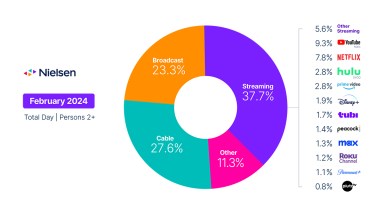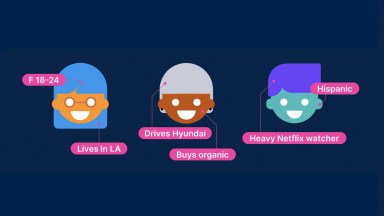Across all media, consumers are looking for consistency and credibility from the brands they engage with—not just in the products or services they offer, but in what they say and do.
Inclusion has become top of mind across the media industry, and it’s new terrain for many brands to navigate. Effective brands not only tell consumers how they champion equity, but they show their commitment by taking action. As our population diversifies and personalization becomes increasingly important, brands will need to embrace inclusion by sharing ownership with consumers.
Representation matters to every identity group—male or female, Black or White, young or old. While mass media may sometimes be discounted in its ability to deliver personalized messaging, it’s still key to an effective long-term marketing strategy. Overall, on-screen representation remains low for many identity groups. For example, women make up more than half of the U.S. population, yet are on-screen far less than men (38% vs. 62%). And certain segments of women, particularly women over 50, are drastically underrepresented on screen. In fact, women over 50 are 60% less likely to see themselves in programming.
Representation shouldn’t only be a focus on-screen, but also a focus in advertising. In regards to advertising, brands trying to reach underrepresented identity groups such as women—particularly those over 50—have a true opportunity to seize. Last year, this group spent nearly $800 million across 25 CPG categories, compared with $608 million for women 18-34 and $680 million for women 35-49. Nielsen found that consumers are more likely to buy products from brands that advertise featuring someone from their identity group, so inclusion is key to effective ad spending.
Diverse audiences are looking to find on-screen representation that mirrors who they are as individuals. In a May 2021 survey, Nielsen found that 49.7% of adults 18-24 and 51.2% and 25-34, respectively, are more likely to engage with content featuring someone from their identity group. As a result, underrepresented groups of people are migrating to platforms that have more representative content offerings.
To illustrate, the Hispanic population makes up 18.8% of the U.S. population and contributes to more growth to the total population than any other segment. Across all TV, however, Hispanics only account for 5.5% of share of screen, but share of screen across SVOD content is at 10.1%. Although that’s just over half of their representation in the population, Hispanic viewers have taken note—particularly younger generations. Of the 15 most-watched programs on SVOD among Latinos 18-34, 40% had fair or strong Latino representation, compared with only 13% of the 15 most-watched programs among Hispanics 35 and older.
Whether you’re trying to share your brand with women over 50, Hispanics or another underrepresented identity group, marketers have an enormous opportunity to capitalize if they understand where audiences are engaging and also take action to increase representation for diverse audiences.
While the primary challenge lies in creating messaging that looks like the audience it’s projected to, it’s equally important for brands to be mindful of how a message will be received, and adjust it to ensure it resonates. Unfortunately, when an underrepresented identity group does see itself represented in content, there aren’t always characters that mirror their multifaceted lives. For instance, women over 50 don’t necessarily relate to matriarchal and motherly characters, yet that tends to be the focus for programming and advertising—which doesn’t encourage engagement. Without feeling seen, an identity group can’t share ownership with a brand.
As brands seek out new ways to express their values and engage with increasingly diverse audiences, consideration of on-screen inclusion should be at the forefront of the advertising strategy. Similarly, brands should be sensitive to the reception of content by the people it reaches out to. As audiences continue to diversify, the massive opportunity to connect with audiences will grow. Looking ahead, more and more brands will focus on sharing brand ownership with the audiences they target and increasingly, advertising dollars will be invested into programs that are inclusive.
For additional insights, download our Advertiser Playbook.



